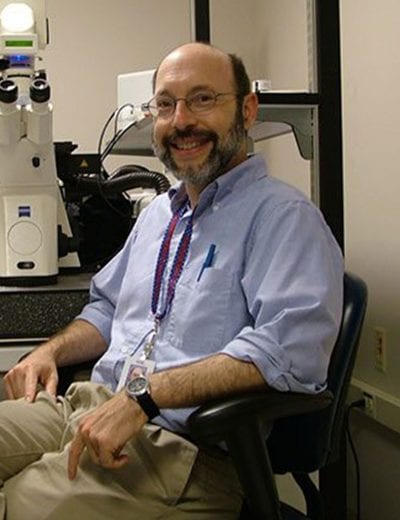In Alzheimer’s disease (AD) and other tauopathies, the tau protein misfolds to form a ‘fibril’ structure that builds up into neurofibrillary tangles. It also forms ‘seeds’—smaller structures that propagate tau pathology by causing normal tau to misfold in nearby connected cells. While before and after points are known, a complete description of the intermediate steps leading from normal tau to fibrils, tangles, and/or seeds is still missing. This foundational knowledge is expected to provide insights that will help design novel treatments to prevent tau pathology from forming and spreading. In the last funding cycle, Dr. Hyman’s team aimed to map out these early steps of tau pathogenesis in fine detail. Notably, they determined that pre-fibril, misfolded forms of tau do not always produce fibrils and tangles. In other work, Dr. Hyman and Dr. Bennett made a surprising observation: in a tau mouse model, neurons without tangles were more likely to die than neurons with tangles. These results led the team to hypothesize that an early misfolded form(s) of pathological tau is the primary driver of neuron dysfunction and death. Further, they predict that these harmful forms cause effects that are different from the classical neurofibrillary tangles.
They propose two experimental aims to test this hypothesis. (1) They will visualize the earliest stages of tau misfolding and aggregation after the uptake of tau seeds. These experiments will be performed with advanced imaging techniques in living mice that enable the team to regularly track the uptake of tau seeds (isolated from human AD brain samples), tau aggregation, and several functional consequences of these early events, including neuron death. Notably, the imaging method allows the team to follow these events in the same neuron over one month. (2) They will determine if misfolded tau aggregates directly impact neuronal function. They will inject mice with human AD tau seeds—to cause tau aggregates to form—and then use live imaging to monitor for changes in neuronal activity patterns. Previous data suggests that toxic forms of tau silence the electrical activity of neurons, but it was not possible to determine if this result was due to tau aggregates or tangle formation. They can differentiate between these possibilities by tracking neuronal activity in the same neurons that take up tau seeds. These results will provide critical information regarding which forms of tau impact neuronal function.



